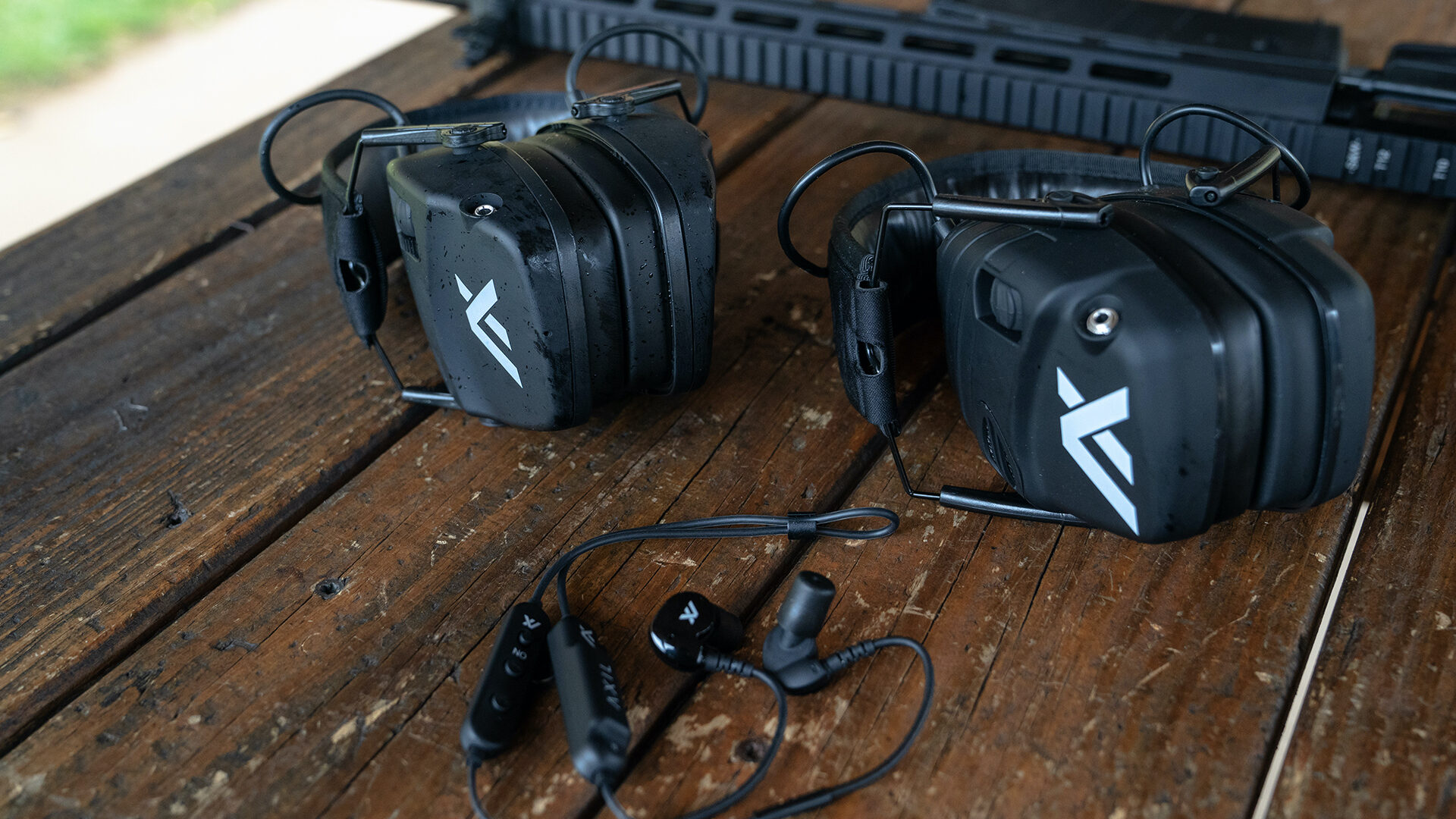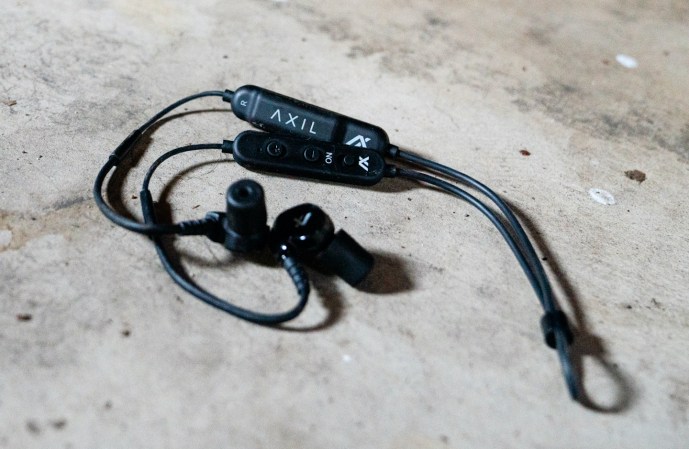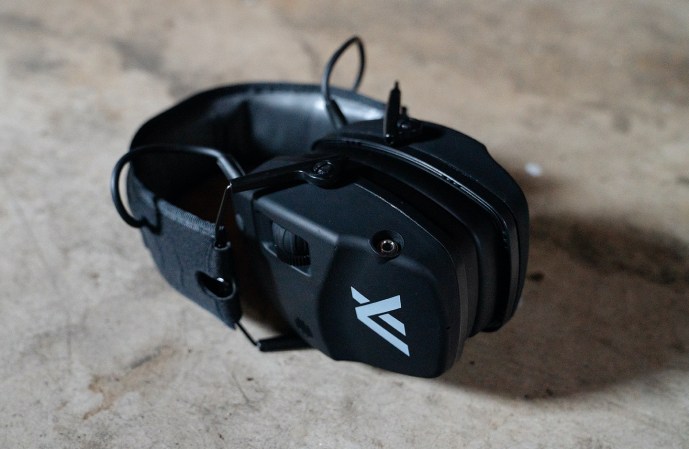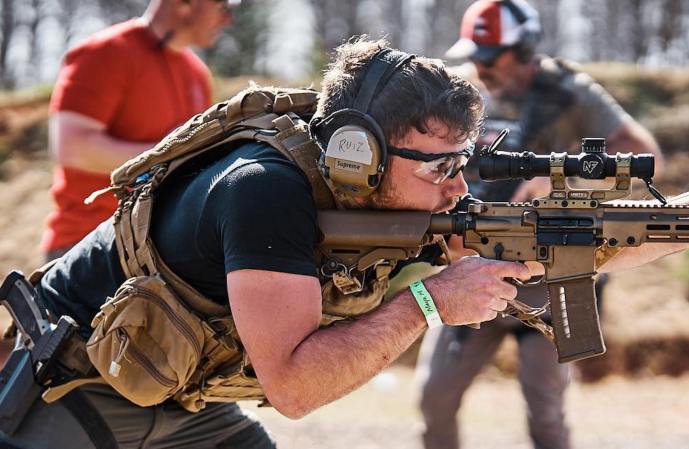We may earn revenue from the products available on this page and participate in affiliate programs.

Welcome to Clout Patrol, the semi-regular series where we put much-hyped gear to the test. If something is worth the money, we’ll confirm it; if not, we’ll find you something that is.
These days, it seems like we can’t use the internet, watch a YouTube video, or check social media without getting an advertisement for Axil hearing protection. While most marketing materials for shooting ear protection are squarely aimed at the tactical crowd, cornering the market on U.S. service members would be a massive win for any company, and Axil appears to be prioritizing your business.
To be honest, Axil doesn’t necessarily have the brand recognition of, say, Peltors or Walkers. According to Axil’s website, the company has been selling “the finest performing hearing enhancement and protection devices available” for more than 60 years. This is technically true, as the company was formed in 2012 by combining and rebranding SportEAR (founded in 2000) and Harris Hearing Group (founded in 1958). According to a May media release, Axil is scheduled to be acquired by Reviv3, a hair- and skin-care e-commerce company, which is, well, a bit weird.
What does all this mean for you? Does picking up a set of Axil hearing protection open up a world of cutting-edge technology backed by decades of industry-leading expertise? Before we get into our testing and evaluation, take a look at the selling proposition from Axil.
The hype
Axil’s homepage boasts “superior hearing for professional, recreational, and everyday wear.” The company’s product lineup includes hearing aids, earbuds, earmuffs, earplugs, ear care, and even an online hearing test. That looks like a pretty comprehensive approach to protecting your hearing. The idea of an at-home hearing loss assessment seems like a good idea, but there are a lot of variables that could throw a wrench into the test’s efficacy so you should probably take any results with a grain of salt.
If you’ve been on Instagram lately, there’s a good chance you’ve been targeted by what appears to be an extremely well-funded Axil marketing budget. The brand’s ads and sponsored content are seemingly everywhere. Every last influencer is in great shape and the photos deliver all the beards, bikinis, tats, and high-speed gear you could ask for. Axil’s sponsored shooters are certainly accomplished, but you might feel like the marketing folks are pushing a lifestyle image rather than a product. This wouldn’t be the first time a company pushed its product on service members and veterans with military visuals and messaging. Brands like Black Rifle Coffee Company, Hardhead Veterans, and Armed Forces Brewing Company (don’t miss our taste test) have all found degrees of success in moto-monitization. Axil is just one of the tactic’s latest adopters.
The advertising is also in heavy rotation on YouTube, where Axil’s video production is seriously good. The company’s YouTube channel has several 30- to 60-second spots that look like action movie trailers. Sure, there’s a predictable mix of shooting and Crossfit (why must we have the Crossfit agenda forced upon us at every turn?) for the tacti-cool segment but the production quality is commendable. Where things get weird is the longer “reviews” by people who are clearly speaking on behalf of Axil. These video advertorials raised a few eyebrows around here.
The test
Evaluating hearing protection can be fairly subjective since everyone has different perceptions of proper fit and sound quality. To account for this, three of us — commerce reporters Scott Murdock and Matt Sampson and commerce editor Daniel Terrill — each got our own set of Axil’s GS Extreme 2.0 earbuds, Trackr BLU ear muffs, and Trackr ear muffs. All three provide active hearing protection, meaning they allow sound to pass through to your eardrum while reducing loud noises like gunshots to a more manageable level.
Eager to get to work, we all unboxed the ear pro right away and started wearing them around the house. We cranked up our favorite songs and podcasts over Bluetooth, ran the vacuum, and used a variety of power tools. We wore the earbuds to the gym and on walks with the dog. In the case of the earbuds, we swapped out the various earplug options to test for fit and sound-blocking performance. Over a week of daily use, we got a solid idea of how each product performs.
To evaluate performance on the range, all three products got time on the firing line with the tack-driving Smith & Wesson Volunteer DMR. The sound of 5.56×45 NATO echoing between a metal roof and concrete shooting platform is familiar to military and civilian shooters alike. There are louder rounds out there, but America’s most popular rifle is the ideal test platform for this kind of thing.
The Earbuds
Axil GS Extreme 2.0
The Headset
Axil Trackr BLU
The verdict
Here’s the bottom line: the Axil hearing protection we used is all hype and very little heat, showing that slick advertising can’t overcome poor-quality base materials.
Axil presents itself as an all-things-hearing-protection company. That results in a wide product offering, but a noticeable lack of specialization. Are the GS Extreme 2.0 earbuds usable Bluetooth headphones? Sure, there were instances when we enjoyed them. They aren’t something we can recommend as hearing protection while shooting, though, and we’re not the only ones. Maybe Axil’s sponsored shooters can enlighten us, but we weren’t impressed — especially with a price tag of $199.99.
The Trackr series ear muffs felt comparable to several other products we’ve tested, but the price seems way out of line at $159.99 for the Bluetooth-enabled Trackr BLU. Perhaps they’re just superior ear muffs, you might say. Not so fast. When pairing the Trackr BLU with our phones and computers, we noticed that they appeared in the Bluetooth menu as EM030BT rather than Trackr BLU. A quick search revealed that the EM030BT is a product sold under other brands, including ATN, Epicshot, and Prohear. That’s right, you can order a pair that appears to be identical from Alibaba for just $24.00. We don’t care if you want to represent your favorite brands with a logo on generic, up-priced ear protection, just be aware that might be what you’re doing.
Meet the competition
Not convinced by the hype? Here are a few alternatives we think you should consider.
Matt's Pick
Sordin Supreme Basic
Scott's Pick
Walker’s Silencer BT 2.0
FAQs about hearing protection
More questions? Here’s Task & Purpose’s additional brief.
Q. How much does good hearing protection cost?
A. Usable active hearing protection costs as little as $40 in the case of Walker’s Razor Slim ear muffs, which earned a thumbs-up in our hands-on testing. Prices go to $300 and beyond for premium hearing protection and can approach $1,000 for custom-molded earpieces.
Q. How do I know which type of ear pro is right for me?
A. Unless you’re on an extremely tight budget, active hearing protection is the way to go. Choosing between earmuffs and earbuds is a matter of personal preference. In-ear hearing protection is more expensive but weighs less and is less likely to interfere with proper cheek weld or your helmet.
Q. Is active hearing protection worth buying?
A. We believe it is. Unless you’re just trying to block the sound of motorized equipment while you work alone, the advantages of being able to hear people around you far outweigh the additional cost. With options as low as $40, why not take advantage of active hearing technology?



